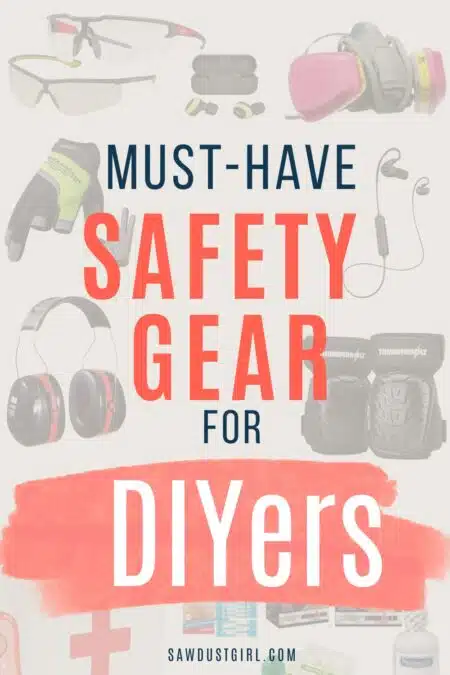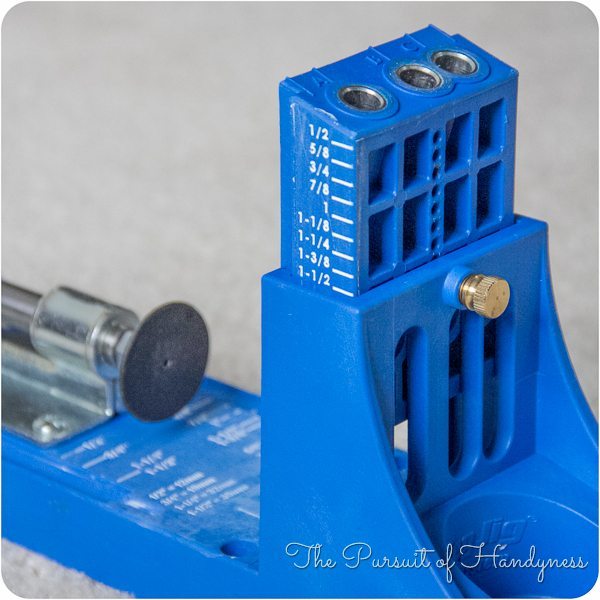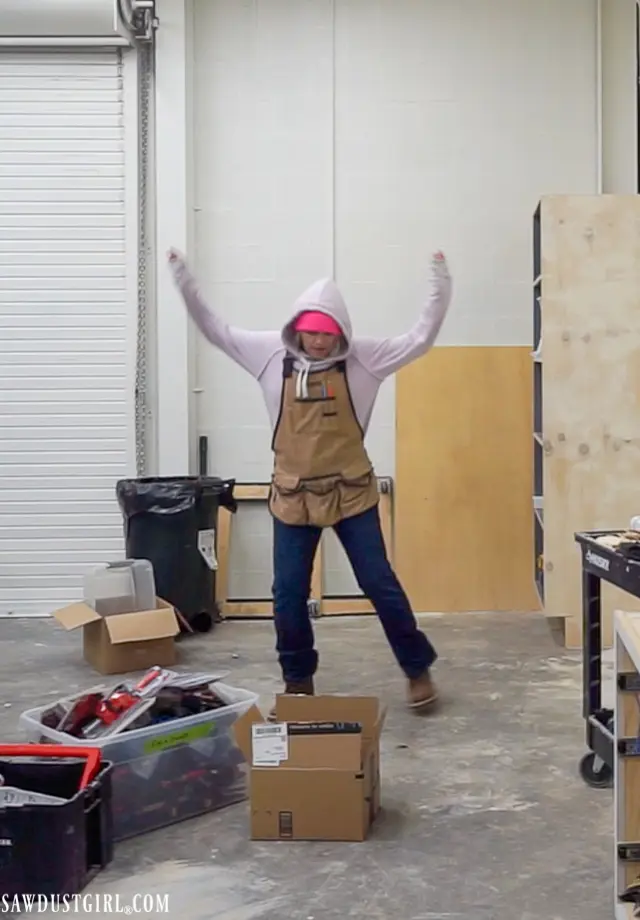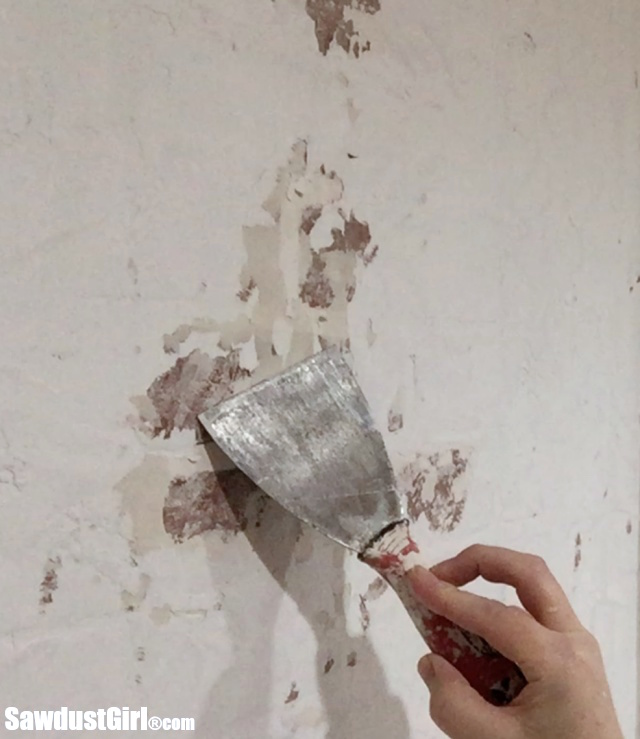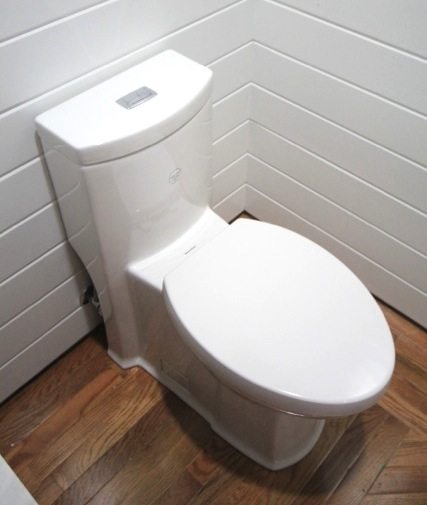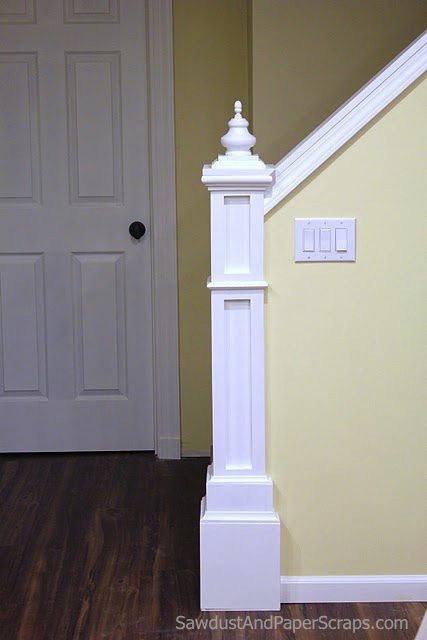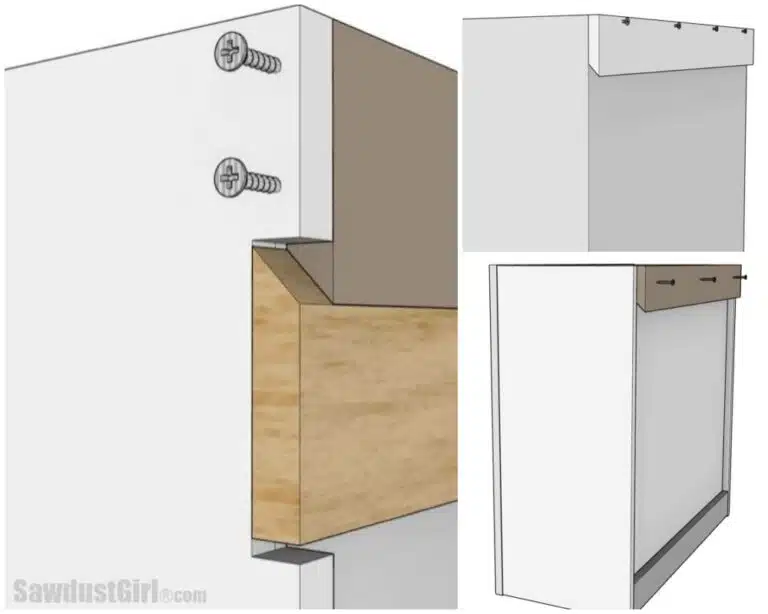Safety Gear for DIYers
With my gymnastics background, I don’t personally consider using a 5-gallon bucket/step stool – a safety risk. Regardless of balance skills, I think we can all agree that eyes, ears and lungs are not organs where safety standards are subjective. Since I basically DIY all day, every day, I am always looking for more comfortable safety glasses, better noise blocking hearing protection, gloves that actually fit my female hands, and every other DIY PPE need. In this post I’m sharing the safety gear that I use every day.
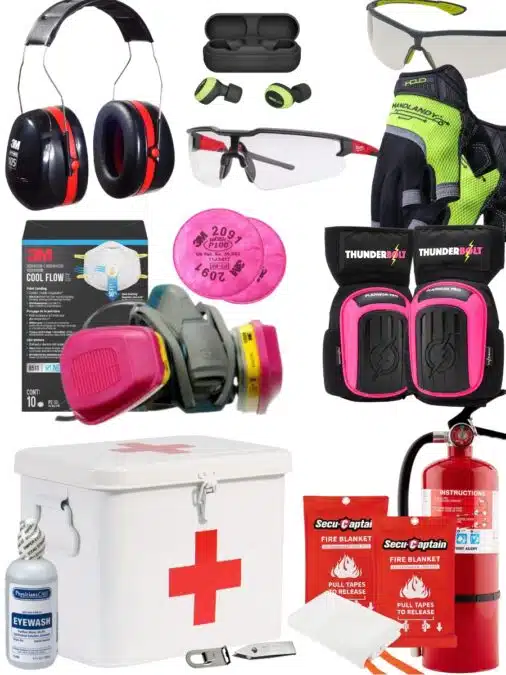
Eye Safety
Let’s start with what I consider the most important, eyes. It’s not impossible – but it is very difficult to do much renovating, DIYing, or Cabinet making with poor vision. Eye protection is one thing I never risk. I keep multiples of all three of the below in my shop and a pair of each on my workcarts.
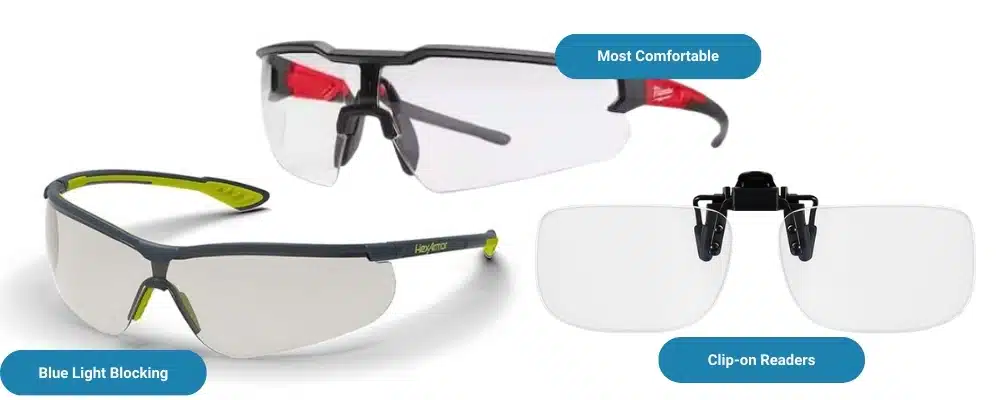
- Milwaukee Anti-Fog: Out of all the safety glasses I’ve tried these are the ones I find most comfortable – and that stay in place on my face. I barely notice the earpieces and the wide nosepiece keeps these in place even if I’m sweating and facing down.
- HexArmor VS250: After having cataract surgery, my eyes became really sensitive to bright overhead lights. Thanks to my neighbor, I discovered these Blue light blocking HexArmor glasses. When my brain is way overstimulated from too bright lights, these really calm down that chatter! They are comfortable. However, they do not stay in place when my face becomes “dewy” from hard work.
- Clip-on Readers: Another outcome from my cataract surgeries (and artificial lens implants) is immediately losing the ability to see anything up close. Progressive lenses did not work for me so I wear readers when at my computer and these dandy clip-ons on my safety glasses when I’m doing my other work. (It feels ridiculous but it works.)
Hearing Protection
I listen to audio books or music while I work so my go-to hearing protection options are bluetooth but I also keep a few pairs of over the sound reducing headphones as well. I’ve tried quite a few brands that I allow one to listen to music in loud environments – and I keep going back to Isotunes. Technology changes quickly so there are constantly new products being developed with longer battery life, higher noise reduction ratings, and other new and enticing features. Below are the products I use daily – currently.
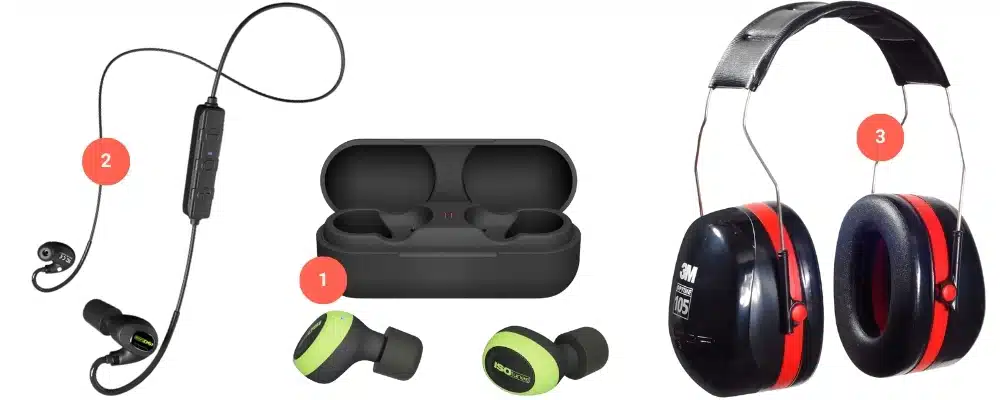
- The pair I almost every day are ISOtunes Free 2.0. The “wireless” feature is both a benefit and a problem because when I occasionally need to remove an earbud – I have to find somewhere to put it so it doesn’t get lost. Even with that in mind, these are my #1 go-to.
- There are certain jobs where I know I’ll be removing an earbud (or both) many times – for those jobs I grab my ISOtunes PRO so I can let the earbud dangle around my neck when not in my ear.
- I keep several pairs of over-the-ear sound reducing earmuffs hanging on pegs in my workshop and workrooms for visitors/mentees/Wes – for anyone that is in the space where I’m making noise.
Respiratory Protection
I always keep a box of disposable masks on hand for visiting DIYers as well as a multitude of reusable respirators and filters for painting and dust making. A few years ago, I purchased two pretty expensive helmet-type-respirators that supply clean air but can not say they were worth the investment because they only come in one size – which does not comfortably stay put on my head.
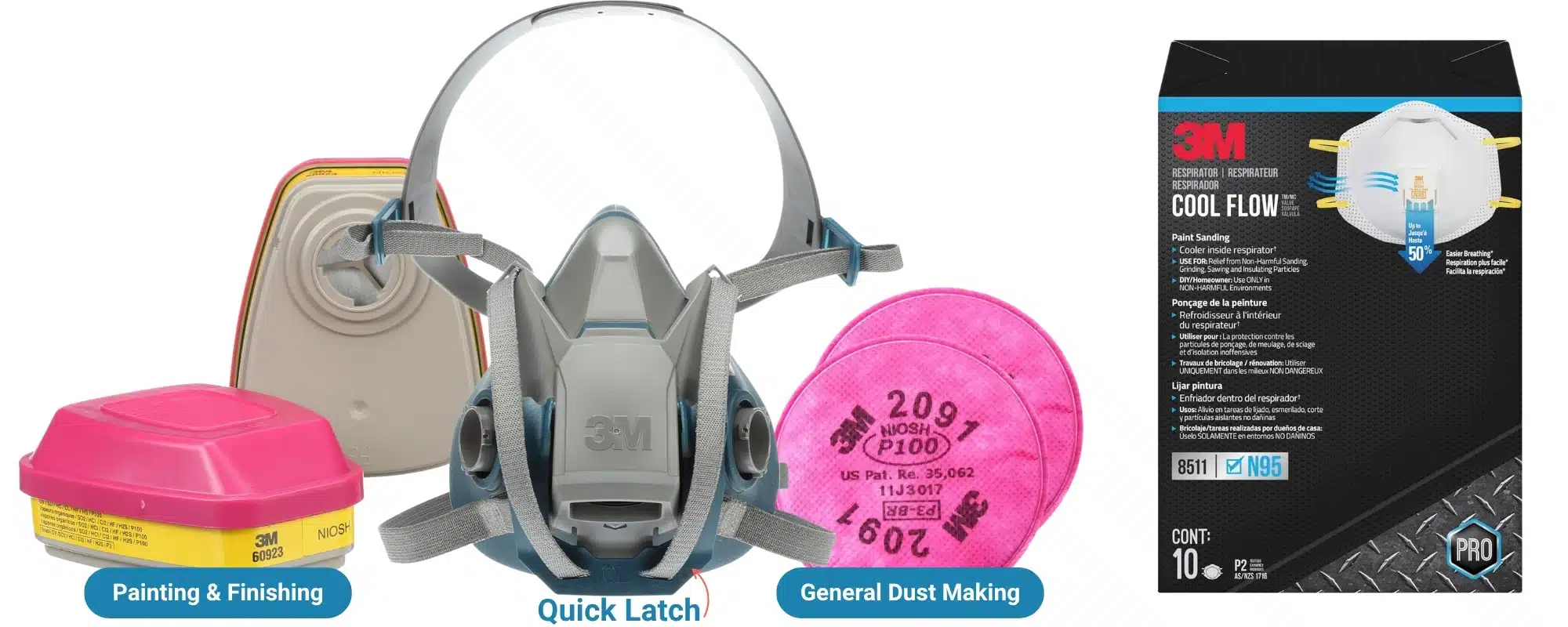
- My current favorite respirator is the 3M Rugged Comfort Quick Latch which allows you to release the mask from your face with one hand. Very useful when you don’t have both hands free but you desperately want that sweaty rubber mask OFF your face!
- I keep replacement filters on hand to switch out when needed.
- 3M 60923 Cartridge/Filters for painting and finishing
- These should be stored in an airtight container when not in use to prolong their life.
- Replace cartridge/filter when you can smell paint or chemical while wearing mask.
- 3M 2091 P100 Particulate Filters for all the dust making activities
- Replace filter when it becomes difficult to breath through or filter gets damaged or dirty.
- 3M 60923 Cartridge/Filters for painting and finishing
Respirator Cleaning
It’s important to clean re-usable respirators often (3M says to do it after each use) by immersing it in warm water with a neutral detergent. In between washings, there are several cleaning products like the Super Sani- Cloth Germicidal Disposable Wipes that are approved for the 6500 respirator.
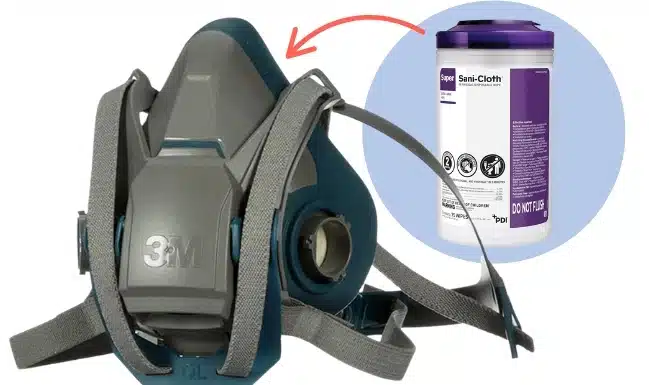
*Refer to page 6 of this 3M cleaning and disinfecting document for additional cleaning information.
Gloves
Firstly, I do not wear gloves while using power tools. Period. However I do keep multiple kinds of gloves in my shops and on my work carts for tasks where they will protect my hands (rather than becoming a safety hazard).
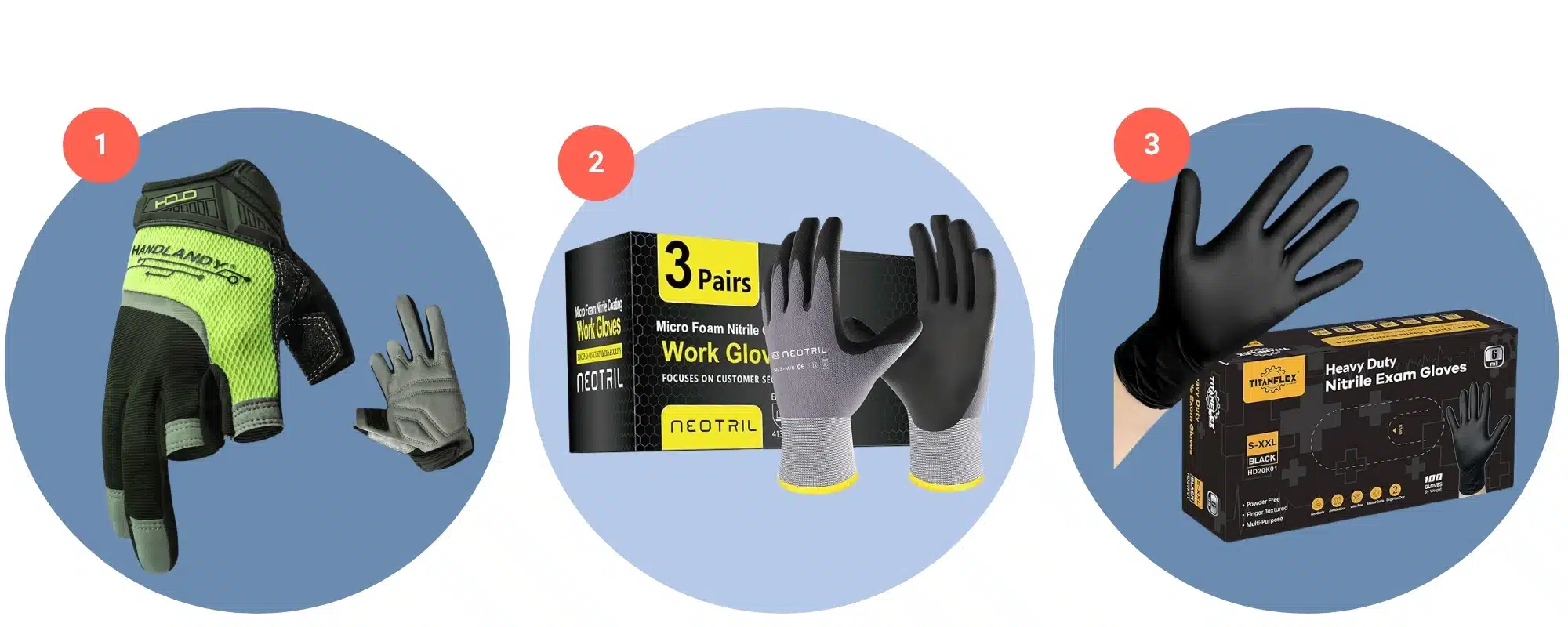
- I keep one pair of Carpenter gloves at my edge-banding workstation and one in my mobile work cart. It’s a real challenge to find work gloves that fit my hands. The fact that these come in S and M (in addition to L, XL, and XXL) sold me. They protect most of of my hands from splinters and cuts while allowing me to grip screws and feel for surface texture with the two exposed fingers.
- Nitrile coated breathable gloves are what I use when installing glue-down flooring or tiling. They are grippy and protective on the palms but the back is breathable nylon so my hands don’t get super sweaty.
- I always keep a box of disposable nitrile gloves for when I need to use solvents or oil based finish products.
Kneepads
I could probably make a car payment with the money I’ve spent trying to find a pair of kneepads that fit, don’t constantly slide down my legs or cut off my circulation when I kneel down. Even work pants with pockets for kneepad inserts left me wanting. Last year I ordered a big assortment of different kneepads – determined to find something that fit my needs. These specific Thunderbolt knee pads are the winners!
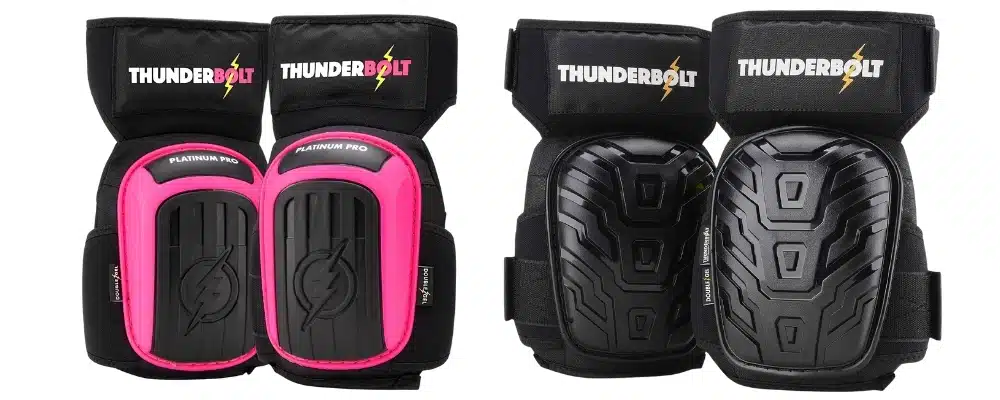
First Aid
Even with all my safety precautions, I get plenty of slivers and cuts – generally daily. I keep all my first-aid supplies in metal tins because they are easy to access but close up tight and keep the contents from getting crushed dusty. I keep my kits full of general first aid supplies with the addition of a few items specifically useful in a woodworking, cabinet building, “maker’s” workshop.
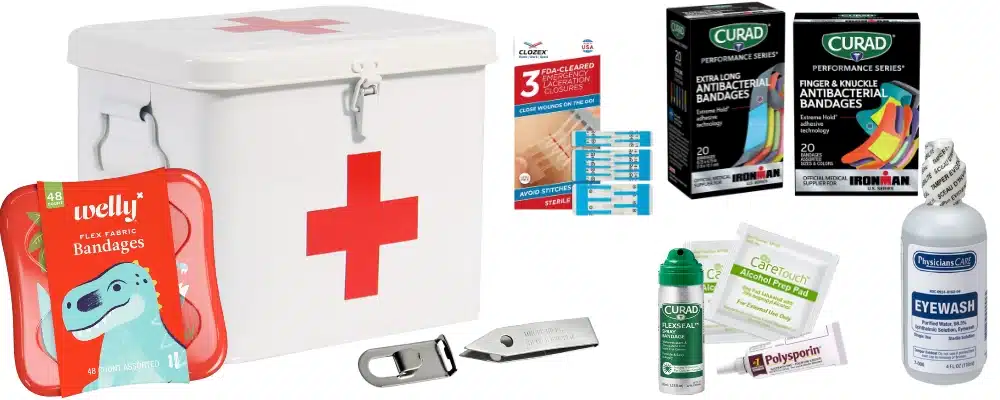
My large workshop first aid kit includes:
- Eye Wash
- Alcohol wipes
- Polysporin
- Liquid bandage
- Uncle Bob’s Sliver Grippers
- Knuckle and fingertip bandages
- Extra long bandages
- Wound closure bandages
I have Welly first aid tins in each of my mobile workbenches which include:
- Alchohol wipes
- Polysporin
- Sliver Grippers
- Bandage assortment
Fire Safety
Though I hope never to need them, I keep a fire extinguisher in my workshop – right next to my CNC machine, and fire blankets in multiple rooms in the house. Better to be prepared than not.
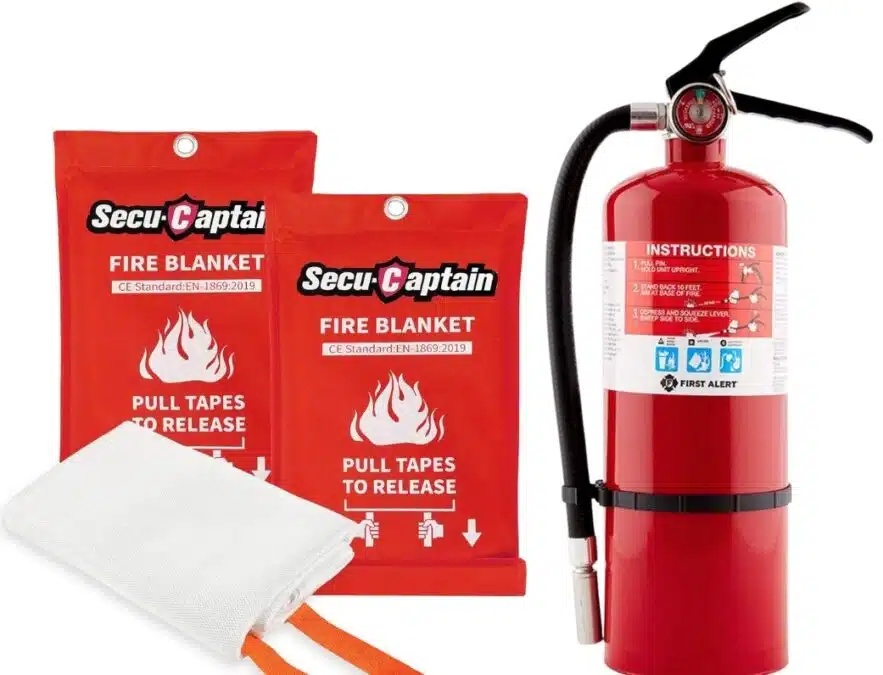
These are the safety gear essentials I keep on hand and replace as needed.
